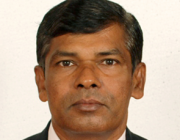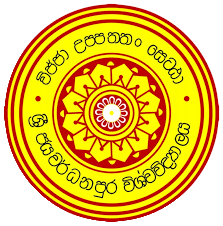Presentation Date:
Location:
Presentation Files:
Public education versus private tutoring in Sri Lanka: who is contributing more?
Introduction
Private tutoring which is also known as shadow education is globally expanding phenomenon (Byun et. al. 2018). Sri Lanka is no exception. “In Sri Lanka, supplementary private tutoring has long been a pervasive part of many students’ everyday experiences” (Bray 2003). Even though Sri Lankan government spent a big amount of money per-student (Rs. 11,804 in 2015 and Rs.11,357 in 2016 on average, Ministry of Education), many Sri Lankan children start attending private tutoring leading up to grade five scholarship examination (Cole 2017). Among Sri Lankan students for private tutoring demand was very high since many years ago. In 1990, it was estimated that 75 percent of students were attending private tuition classes. The proportion is 62 percent among G.C.E (A.L) arts students, 67 percent for G.C.E (A.L) commerce students and 92 percent among G.C.E (A.L) science students in the same year (De Silva 1994). Empirical literature on private tutoring is growing. However, whether shadow education indeed matters to academic achievement is still unclear and needs further analyses (Byun 2014: 54; Cole 2017).
On one hand, in Sri Lanka, the government always tries to provide education at its cost. On the other hand, people always claim for free education. In such a situation, private tutoring is escalating. As a result, household expenditure for private tutoring is also increasing. It seems that parents enroll their students in public schools and send them to learn in informal fee-paid out-of-school classes. As a result, parents have to spend much money on private tutoring. On this background, it is clear that the contribution of public schools and private tutoring classes to student academic performance needs to be separately assessed, the reasons for the increasing demand for private tutoring need to be ascertained and household expenditure for both public school education and private tutoring needs to be estimated.
Objectives
The study assesses some selected aspects of public school education versus private tutoring for school level education. Therefore, the objectives of the study are: to determine the individual contribution of both public schools and private tutoring classes to students’ academic performance, to estimate per student expenditure borne by households for private tutoring, and to ascertain reasons for demand for private tutoring.
Methods and analytical tools
To achieve the objectives of the study, data regarding public schools, private tutoring classes, student performance and household are required. Student performance is available in Department of Examinations. However, for an in-depth analysis, the attendance of students and the extent of teaching (the coverage of subject matter) in public schools and private tuition classes, household expenditure borne for private tutoring need to be gathered. To gather these data, a sample of 100 students who sat for the G.C.E (O.L) examination in December 2017 and 300 students who completed their G.C.E. (A.L) examination in August 2017 were randomly selected so that sampled G.C.E (A.L) students represent four subject streams i.e. arts, science, technology and commerce. All these sampled students will be selected from among those who enrolled in public schools in Colombo district. In addition, selected public sector officials of the Department of Education, principals of selected schools, the officials of private tuition classes and famous teachers who conduct private tuition classes were interviewed in order to collect preliminary data that were helpful to design the questionnaires.
In the case of input and output data, student performance is not separately available for public schools and private tutoring. It is available as an added variable of both sectors, and student participation can be estimated separately for both sectors. Considering this situation, the following simple linear model was estimated to determine the contribution of both public schools and private tutoring to student performance.
Yi is the ith student’s academic performance, X1i is the time period of the ith student spent in studying in his or her public school, X2i is the time of the ith student spent in studying in his or her tutoring class/classes, βi is the parameters to be estimated and Ui is the residual term. In addition to these models, descriptive statistics were used in estimating household expenditure for education.
Results and discussion
Out of all G.C.E (O.L) subjects studied in private tuition classes by students, tuition fee is very high for French, Western Music, English Literature, Art, Dancing and IT. However, when compulsory subjects for the G.C.E (O.L) are considered, tuition fee is the highest for mathematics and followed by science. Monthly tuition fee at G.C.E (O.L) for both mathematics and science are respectively greater than monthly per student expenditure borne by government for students in public schools (Appendix 1). According to estimated values for quantity demanded from students in private tuition classes for each subject at G.C.E (O.L) it was found that both mathematics and sciences subjects are ranked highest. As such, higher class fee and higher demand for mathematics and science are consistent. In the case of G.C.E (A.L) monthly tuition fee of all the subjects of all streams is greater than Rs. 1000 which is equal to the monthly per-student expenditure borne by the government at present for public school education.
Sampled public school students at both G.C.E (O/L) and (A.L) were inquired of eleven reasons regarding their learning in private tuition classes. Out of these reasons three were found as most influencing ones. According to the descending order of preference of students those reasons can be stated as “in the private tuition classes repetition of the subject matter taught in the public schools and therefore tuition classes support them to understand academic matters easily, distribution of handouts and notes in the private tuition classes and adoption of better teaching methods in fee-paid out-of-school classes”. Based on the proposed model explained above, linear, log linear and reciprocal regression models were estimated respectively taking total marks obtained by each student for his/her G.C.E (O.L) subjects studied in his private tuition class and Z-score each student obtained for his/her G.C.E.(A.L) examination as dependent variables. Total number of hours spent studying all the subjects in both private tuition class/es and public schools separately included as independent variables. Parameters of tuition time in private classes are highly significant with the positive sign and private tuition classes could be identified as a significant contributor in determination of student performance at both G.C.E (O.L) and (A.L) (Appendix 2).
Conclusions and policy recommendations
The paper concludes that private tuition classes also contributes the knowledge of students in public schools in Sri Lanka, parents school children spend extensively on fee-paid out-of-school classes. Even though free education is still provided in Sri Lanka, parents paid much more money on education of their children. In the case of policy recommendations, in order to produce productive results through the market forces, rapidly escalating private tutoring industry emphasizes requirement of monitoring of the same by the government. Students attending private tuition classes understand that teaching quality is better in these classes than that in public schools. This proposes public schools to look for more attractive teaching methods. Finally, higher demand for informal fee-paid out-of-school education puts a big question mark in presence of free school education.
Keywords: Academic performance; Public schools; Shadow education.
References
Bray, Mark (2003). “Adverse Effects of Private Supplementary Tutoring: Dimensions, Implications and Government Responses”, International Institute for Educational Planning, UNESCO.
Byun, Soo-yong (2014). “Shadow Education and Academic Success in Republic of Korea”, in H. Park and K.-k. Kim (eds.), Korean Education in Changing Economic and Demographic Contexts, Education in the Asia-Pacific Region: Issues, Concerns and Prospects 23, Springer Science Business Media Dordrecht.
Byun, S., Chung, H., & Baker, D. (2018). “Global patterns of the use of shadow education: Student, family, and national influences”, Research in the Sociology of Education, 20, 71-105.
Cole, Rachel (2017). “Estimating the impact of private tutoring on academic performance: primary students in Sri Lanka”, Education Economics, 25:2, 142-157.
De Silva, W.A, (1994). “Extra-School Tutoring in the Asian Context: with special reference to Sri Lanka”, Department of Educational Research, National Institute of Education.
********************************
|
Appendix 1 |
Average monthly tuition fee for private tutoring charged for each G.C.E (O/L) subject as explained by public school students who are attending private tuition classes (Rs.)
|
No of Students |
Subject |
Average monthly Tuition fee (Rs.) |
|
97 |
Science |
971.65 |
|
99 |
Maths |
1147.98 |
|
69 |
English |
1049.28 |
|
63 |
Sinhala |
915.87 |
|
38 |
History |
869.74 |
|
45 |
Commerce |
907.61 |
|
8 |
I.T |
1262.50 |
|
3 |
Art |
1833.33 |
|
3 |
Music |
900.00 |
|
2 |
English Lit. |
2500.00 |
|
3 |
Dancing |
1266.67 |
|
1 |
W.Music |
2500.00 |
|
1 |
Drama |
600.00 |
|
1 |
French |
3000.00 |
|
1 |
Home Sci. |
600.00 |
|
1 |
Agriculture |
500.00 |
|
435 |
Total No of Students |
|
Source: Field survey, 2019
Appendix 2
Regression Results
|
Dependent Var
|
Const |
Independent Variables |
R2 |
D.W Stat |
n |
|
|
Sum of Tuition hoursb |
Sum of School hoursc |
|||||
|
G.C.E (O/L) |
||||||
|
Total Marks (O/L)a |
37.00 (1.79) |
0.16 (8.62) |
0.06 (4.05) |
0.638 |
2.10 |
107 |
|
G.C.E (A/L) |
||||||
|
Z-score
|
1.25 (9.2) |
0.000085 (1.79) |
0.0000276 (1.76) |
0.034 |
0.62 |
207 |
a- Total marks obtained for all subjects learned in the tuition class.
b- Total number of hours spent in the tuition class to study all subjects included as the dependent variable..
c- Total number of hours spent in the public school to study subjects studied in the tuition class.
t-statistics within parenthesis

